The recent downturn of cryptocurrencies and tokens has empowered industry skeptics and critics, while leaving some advocates second-guessing the potential and adoption of cryptocurrencies and tokenization. For many current and would-be investors, the biggest question is whether it’s a still good idea to invest in and trade cryptocurrencies and tokens.

Recapping Recent Developments in the Cryptocurrency Space
After the rapid surge in value for cryptocurrencies and rapid expansion of digital tokens and initial coin offerings (ICOs) in 2017, some expected the bull crypto market to continue well into 2018. However, market volatility has been on full display starting late 2017, as the value of cryptocurrencies surged in Q4 2017 before tumbling during Q1 2018 and into Q2 2018.
Recent Performance of Prominent Cryptocurrencies Since December
After reaching all-time highs across the board in December of 2017 and January of 2018, cryptocurrencies began to see a sizable correction. Their prices would eventually drop to under one-third of the all-time highs they registered only months before.
Bitcoin Performance

(source: coinmarketcap.com
After reaching an all-time high near $21,000 on December 17, 2017, Bitcoin dropped to $13,900 on December 21, before pushing back above $17,500 on January 5, 2018. From that point, it began falling as far as below $6,200 on February 5, a price not seen since November 2017. It found support there and began rising to just above $11,850, before beginning to sink again below $7,000 towards the end of March. Recently, Bitcoin has been rising, breaking $8,000 in mid-April 2018 and approaching $9,000 as of April 20, 2018.
Ethereum Performance
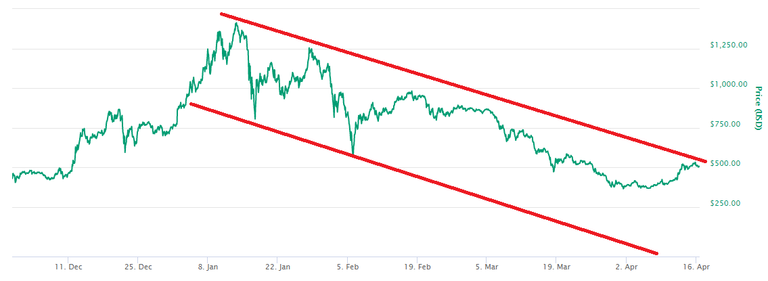
(source: coinmarketcap.com)
Ethereum trended upward throughout December and broken $1,400 in mid-January, being independent of Bitcoin’s volatility during that period. After its peak in mid-January, Ethereum has since entered a downward trend like Bitcoin and other cryptocurrencies.
Increasing Regulations and Government Opposition
Towards the end of 2017, several developments and statements began to make their impact, compounding the downturn in the cryptocurrency market. Governments, financial regulators, and even banks were taking notice of cryptocurrencies, making statements and indicators that increased regulation and action was coming soon.
China Cracking Down
China ordered all domestic cryptocurrency exchanges to shut down in September 2017. Overall, the Chinese government has been proposing and implementing additional policies hostile to cryptocurrencies.

At the same time, local Chinese governments have pushed forward with blockchain projects.
US SEC Warnings
In 2017, the U.S. Securities and Exchange Commission (SEC) issued warnings about cryptocurrencies and ICOs.

As part of its efforts to regulate the growing cryptocurrency market in 2018, the SEC stated that cryptocurrency exchanges will be required to register with the financial regulator.
US Federal Reserve Governor Calls Cryptocurrencies “Volatile”
In a speech given at New York University’s Stern School of Business, Federal Reserve Governor Lael Brainard said that cryptocurrencies had witnessed “extreme volatility”. She stated that the Federal Reserve was monitoring this volatility. She said it wasn’t clear that the volatility in cryptocurrency posed a threat to financial instability.
South Korea Regulations
South Korea, known for early adoption of technology, boasts a market of 2 million digital currency investors, with the Korean won being the third most traded currency for Bitcoin. The government began to scrutinize cryptocurrency in mid 2017, moving to ban the anonymous trading of cryptocurrency on domestic exchanges in December 2017, and has since remained vague about its position towards cryptocurrencies. Many young investors have struggled in the wake of the volatility and increased regulation.

ICO Scams
Fraudulent ICOs have also become a major concern, which had prompted scrutiny from goverments and regulators. While ICO scams were around for years before, the number and magnitude of ICO scams accelerated rapidly with the meteoric rise in the price of Bitcoin and other cryptocurrencies in late 2017. The most common was the exit scam, where the team involved in the ICO suddenly disappear with the raised capital. PlexCoin was shut down by the SEC in December 2017 after an official complaint was filed that its founder, Dominic Lacroix, was defrauding investors in one of the largest attempted exit scams in the history of ICOs. ICO scams still persist, and investors have become extremely sensitive, with the recent uproar over German company Savedroid’s publicity stunt with a “fake” ICO exit scam.
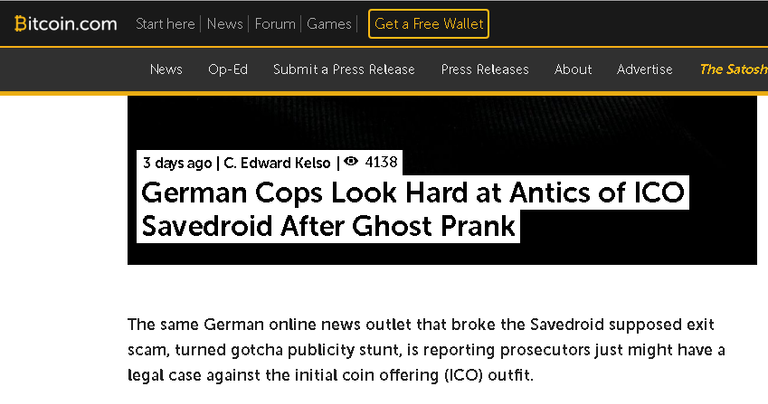
Recognizing Opportunities
Reviewing the performance for a stock, asset, industry, or national economy can reveal that markets experience several ups and downs, with some trends being brief across hours or days and larger trends persisting for months or even years. Understanding several factors and reviewing recent developments in a different perspective will empower investors as they make decisions regarding their cryptocurrency portfolios.
Regret Theory & Regret Avoidance
Regret theory states that people anticipate regret for wrong choices, and take this anticipation into consideration when making decisions. The anxiety over regret can be a significant factor in dissuading someone from taking an action or motivating a person to take an action. For investing, regret theory can drive investors to be more risk averse or it can drive them to take greater risks. For the overall cryptocurrency and token market, the rapid rise in late 2017 was driven in part by investors regretting missed opportunities earlier in the year, while the decline in early 2018 was likely driven in part by investors reducing their holdings or exiting the market entirely.
Understanding the psychology of regret theory can reduce its impact on investment decisions. Awareness of how regret has affected past decisions can empower investors’ decision-making with new opportunities or current holdings. For example, investor may have missed a large trending move and has subsequently only traded momentum cryptocurrencies to try to catch the next significant move. If said investor recognized that s/he tends to regret missed opportunities, s/he would factor that tendency as s/he decides to invest in the next trending cryptocurrency.
A related concept is regret avoidance, which explains the tendency of investors to refuse to admit that a poor investment decision was made. Regret avoidance can drive an investor to waste time, energy, or money to avoid regret over an initial decision, even exceeding one’s risk tolerance. Maintaining a balance between regret and regret avoidance requires awareness of such behavior, as well as automating investment behavior. For example, formula investing, a strategy in which making investments strictly adhere to prescribed rules, takes much of the decision-making process out of the investor, reducing the impacts from the fear of regret and regret avoidance.
Is Market Volatility Good or Bad?
Market volatility can be an elusive concept to grasp in investing. It’s important to recognize volatility itself is not risk. Rather, it’s the dynamic of price changes over time, which some argue is a positive. Higher frequency and breadth of price movement can make a investment seem to have higher risk compared to those that move slowly and steadily. Market volatility can actually provide several lucrative opportunities for the patient and savvy investor. For example, as the price of an asset fluctuates, it provides opportunity for long-term investors to buy said asset at a lower price, then hold for cumulative growth over time.
For short-term traders, volatility plays a more crucial role as they work with fluctuations that occur rapidly, from second-to-second to week-over-week. Price changes are essential to profit. For both day and swing traders, market volatility is the cornerstone of their strategy. As a price goes up and down, short-term traders can chart patterns and leverage other indicators to help time highs and lows. Though short-term trades may foster smaller yields individually, a highly volatile asset can provide numerous opportunities to trade the swing. Several smaller profits over a short period of time can cumulatively be more lucrative than a single large gain realized after several years of waiting.
Reviewing Performance of Bitcoin Beyond 2017 and 2018
Late November of 2013 saw Bitcoin break $1,000 USD after spending much of that year close to $100 USD. Bitcoin eventually fell throughout 2014, bottoming out just below $200 USD in early 2015.
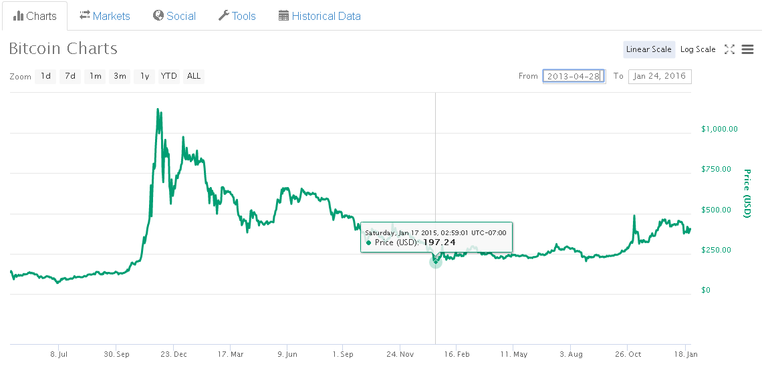
(source: coinmarketcap.com)
Those who weathered the bear market for Bitcoin between 2013-2015 saw strong returns, even through the downturn of Q1 2018. In fact, those who bought Bitcoin at its $1,000 USD peak in late 2013 and sold in late April 2018 would have realized over 800 percent gain or even 900 percent gain. For comparison, the S&P 500 and Dow Jones Industrial Average Indices both gained approximately 50 percent over the same time period.
A closer examination of Bitcoin’s month-over-month performance since 2015 reveals seasonality trends, which can be informative of the better times of the year to buy and/or sell.
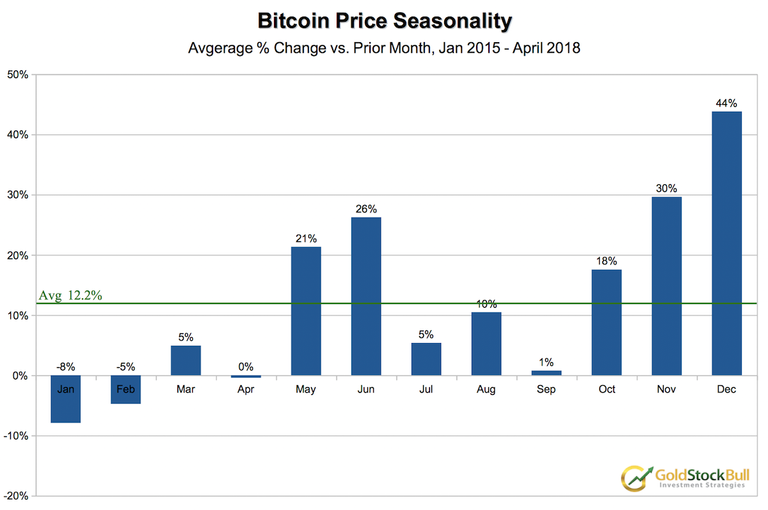
(source: goldstockbull.com)
It’s clear from analyzing the seasonality of Bitcoin’s performance that while Q1 has typically been a period of decline, most of Q2 is one of rapid gain, Q3 is more gradual gains, and Q4 is the best period of the year. Several factors play into these seasonality trends, such as US investors reducing or delaying taxes on gains being one driver for weak Q1 2018 performance. Bitcoin’s performance in April 2018 has formed a bottoming pattern. Per Jason Hamlin, founder of Gold Stock Bull:
“Bitcoin and the cryptocurrency sector are awakening from hibernation and appear ready to greet the Spring with another bull market cycle. It is still too early to confirm the breakout, but this certainly seems like a good point to start buying in tranches and dollar cost averaging if you are long-term bull.”
Increasing Regulation: A Sign of Market Maturity and Legitimacy
Despite the increased and sometimes heavy-handed regulation by established financial sectors, many cryptocurrency and blockchain proponents remain optimistic. Some view regulation as necessary to legitimize the cryptocurrency space and make it attractive, especially to institutional investors. Andrei Huseu, CEO of WealthMan, summarized:
"As a result of this, cryptocurrencies will receive more recognition. Interest in crypto currency will increase. At the same time, the regulation norms in terms of enforcement will not be really effective because of the inability of the judicial system to make changes to the blockchain-based registry."
Reinforcing this sentiment is a recent Thomson-Reuters survey that found one in five financial firms planning to enter cryptocurrency trading in 2018. Of those, 70 percent expected to do so within the next three to six months.
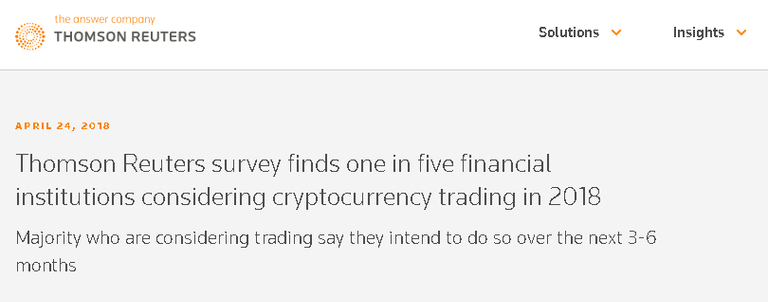
Meanwhile, the financial sectors of emerging markets have focused on regulatory approach to avoid hampering the growth and development of the cryptocurrency space. The South African Reserve Bank (SARB), for example, has assembled a team to observe fintech developments and provide assistance with developing a regulatory regime for cryptocurrencies and representatives of South Africa’s financial sector have proposed the creation of a Self-Regulatory Organization (SRO).
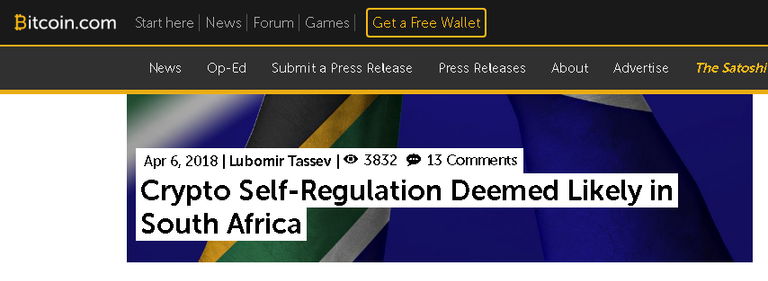
Variances in Regional Demand
Demand for cryptocurrencies is not uniform across different regions. High regional demand can create premium rates--the price of Bitcoin in South Korea seeing a premium in late April 2018. As of this writing, P2P exchange LocalBitcoins.com showed offers from South Africa, Zimbabwe, Nigeria, and Kenya to buy bitcoins nearly 10 percent above the global market rate.
Conversely, cooling demand in other regions can lead to discounts from the global rate. The factors driving these differences in demand can vary from regulatory crackdowns to local financial instability, and some investors observing regional developments can leverage these variances in demand for realizing gains or increasing position at bargain prices.
Rapid Growth in Tokens
Throughout the overall cryptocurrency slump this year, blockchain startups have raised just over $7 billion USD through ICOs, more than 20 percent of the three previous years combined per CoinDesk. As of May 1, 2018 market capitalization of all tokens is nearly $67 billion USD, per CoinMarketCap.
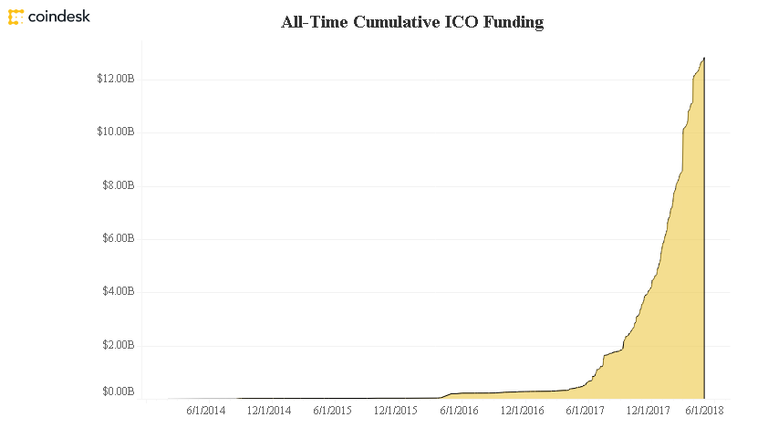
Where Do Investors Go From Here?
Ultimately, each investor must gauge his or her own risk tolerance, carefully weigh the information available, like that discussed above, and adhere to sound investing rules. Nonetheless, it’s clear that numerous lucrative opportunities still remain for a wide variety of investors and investing strategies. For those recognizing such opportunities and remaining bullish on the cryptocurrency space, there are digital asset exchanges like Chankura Exchange.
Disclaimer: the above references an opinion and is for information purposes only. It is not intended to be investment advice. Seek a duly licensed professional for investment advice.
About Chankura Exchange
Based out of South Africa with offices in San Francisco, Chankura is a digital asset exchange enabling people in emerging and developed markets to buy and sell more than 20 cryptocurrencies, like Bitcoin and Ethereum. Chankura also lists crypto-tokens totaling nearly $500 million USD in market capitalization from blockchain companies like Civic, Wala, Swarm, BitClaveand others that have collectively raised over $260 million USD via ICOs.
Chankura’s rapidly growing user base includes both new and seasoned cryptocurrency investors and traders alike from around the world, including those all over the African continent. Chankura currently provides South African users the ability to withdraw and deposit fiat currency (the South African Rand) to enable fiat-crypto trades, while facilitating cryptocurrency and token trades globally. Capable of handling high frequency and high volume trading, Chankura’s daily trading volume can sometimes reach nearly $10 million USD through more than 40 trading pairs, augmented by a user-friendly trading algorithm. Chankura will be releasing a mobile app by May 2018, and will also be featuring eCommerce payment processing in the near future.

Keep in touch and stay updated. Follow us on Steemit and Twitter, and join our Telegram
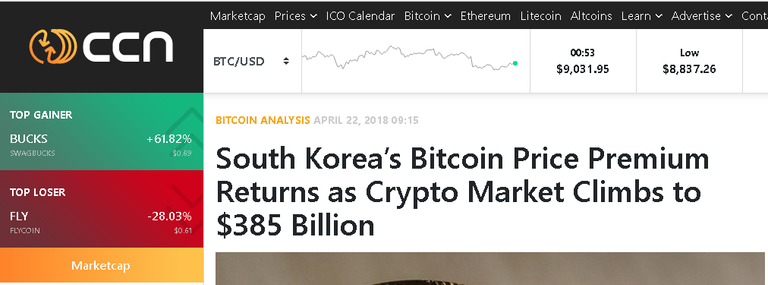
Coins mentioned in post:
congratulations on making your post! I gave you a vote!
Will you give me a follow? I'll follow you back in return!
Very informative and thorough post dude. Appreciate the hard work. Have voted, would love a follow back ;)
Thank you so much! We're glad you enjoyed this post =)
congratulations on making your post! I gave you a vote!
Will you give me a follow? I'll follow you back in return!
interesting data on seasonality. One would tend to think that 2017 was the only "year" of crypto, given the highs. That 2015 and on correlated was instructive.